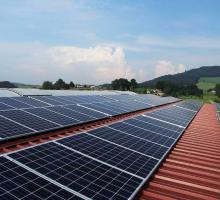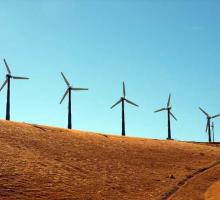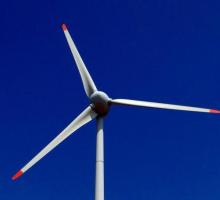What are Perpetual Resources?
Perpetual resources are renewable resources that cannot be exhausted, regardless of their rate of use. Perpetual resources are natural resources, because they are provided by nature without human intervention. But not all natural resources are perpetual resources: some natural resources can cease to be renewable if used in excess or unsustainably.
Examples of perpetual resources
- Wind.
- Solar energy.
- Waves and Tides.
- Geothermal Energy.
Examples of natural renewable resources that are not perpetual resources
- Biomass.
- Fish.
- Forests.
A word of caution: These resources are renewable only when used in a sustainable way.
Example of natural non renewable resources
- Fossil fuels.
- Uranium.
- Certain aquifers.
Energy from Perpetual Resources
While the total energy available from perpetual resources is enormous, it is a challenge to transform this energy into energy that can be of use to mankind. The use of perpetual resources requires investments (like the buildings of wind and solar parks) and the rate of return of those investments depends on factors like the available technology. Another factor that influence the investment in the use of perpetual resources is the rate of return of investments in other energy resources (like fossil energy).
The efficiency of transforming energy from one type to another, for example the transformation of hydraulic to electric energy, or the use of energy without transformation, for example heating water with sunlight, depends on the technology available. New scientific and technological advances are decreasing the amount of energy lost during transformation and improving the performance of the use of perpetual resources. It is expected that the use of renewable resources will increase in the future.
Another advantage of perpetual resources over non renewable resources is the lower environmental impact of it’s use: the use of perpetual resources has lower carbon dioxide emissions and usually also a lower impact in the ecosystems.
Solar Energy
Solar energy comes from the sun. It doesn’t decrease when used. Solar energy can be converted into electric power or can be used as thermal energy.
There are 2 ways of producing electricity from solar power:
1- Solar thermal electricity: a high temperature collector concentrates sunlight (using mirrors or lenses) onto a small area. The heat generated is used to drive a heat engine (like a steam turbine) that generates electrical current.

2- Solar photovoltaic cells: a solar panel containing photovoltaic cells are used to product electrical current.

It is still relatively expensive to produce electricity from solar power, but the amount of solar electricity is growing fast.
In the US, solar electricity accounts for 0.45%: solar thermal: 0.06% and solar photovoltaic 0.39% [fn]Data for 2014 Source: http://www.eia.gov/electricity/annual/.[/fn]
In Europe , the share of solar electricity is 2.7% [fn
]Data for 2013, source: Eurostat http://ec.europa.eu/eurostat/statistics-explained/index.php/File:Net_ele…
The production of thermal energy from solar energy is less complex and involves the use of water passing through a heat sink that is exposed to sunlight. The energy is used in industries and houses (heating and hot water).
Wind
The wind exists because the sun’s energy heats different regions in different ways. It doesn’t decrease when used. With the use of wind turbines, the wind can be used to produce electricity.
Wind power to produce electricity is used more than solar power. In the US, electric power coming from wind account for 4.44% of total electrical energy [fn value=”1”].[/fn]
Electricity production from wind accounts for 7.5% of total electricity production in Europe.[fn value=”2”].[/fn].

Geothermal Energy
Geothermal energy is another form of perpetual resource. It is derived from the natural heat of the earth. In certain spots, hot water or streams are near the surface and can be piped for it’s direct use (heat generation) or the steam can be used to power turbines and generate electricity.
In the US, geothermal energy account for 0.41% of total electrical energy [fn value=”1”].[/fn]
In Europe, geothermal electricity account for 0.2% of total electricity. [fn value=”2”].[/fn]
Tidal, Waves and Ocean Energy
The technology to harness this sources of energy is still under development. These technologies have limited adoption and are still uneconomical in most countries, but may have potential for development in some places.
Waves
Waves are generated mainly by wind energy, which is in turn a perpetual resource. Waves contain mechanical energy that can be used to produce electrical energy.
Tidal energy
Tides are the rise and fall of sea levels caused by the gravitational attraction of the moon and the sun on the ocean.
Tides are more predictable than wind, but the high cost of investment and the limited availability of site with high tidal ranges of flow velocity, has limited the investment in this source of perpetual resource.
Ocean Energy
There are other forms of perpetual resources that the ocean could provide, for example marine currents, temperature gradients and salinity gradients. The harnessing of this forms of perpetual resources is still uneconomical and under development.
tl;dr
Perpetual resources are renewable resources that cannot be exhausted, regardless of their rate of use. Most important perpetual resources are:
- Solar energy
- Wind energy
- Geothermal energy




